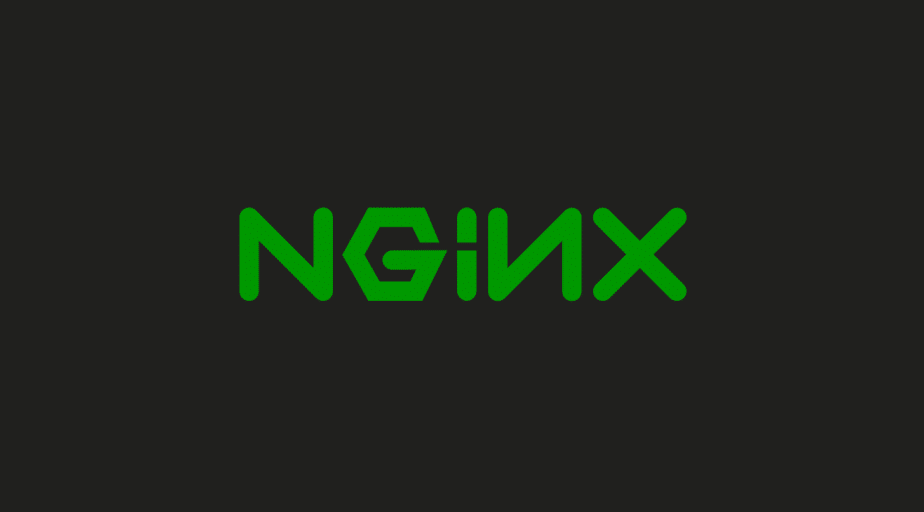The £1.2 Billion Hershey’s ERP Disaster: Why 70% of ERP Implementations Fail
In 1999, Hershey’s invested £1.2 billion in a new enterprise resource planning system that was supposed to revolutionise their operations. Instead, it caused a 19% drop in quarterly revenue, £100 million in lost sales, and a 25% stock price decline. The system couldn’t process Halloween orders, leaving stores without candy during their busiest season. The difference between success and failure often comes down to one critical decision: choosing the right enterprise resource planning approach.
This isn’t just a cautionary tale—it’s the reality for 70% of ERP implementations that fail to deliver expected results. At BlackFlow, we’ve seen this pattern repeat across industries: companies with brilliant business strategies that fail because their enterprise resource planning doesn’t match their operational needs.
What Makes Enterprise Resource Planning Different
The Business Process Integration Challenge
Enterprise resource planning isn’t just about software—it’s about integrating all business processes into a unified system. Unlike standalone applications, ERP systems must:
- Connect all departments from finance to manufacturing to sales
- Standardise processes across multiple locations and business units
- Provide real-time visibility into operations and performance
- Enable data-driven decisions with comprehensive reporting and analytics
- Support regulatory compliance with built-in controls and audit trails
Consider how SAP’s enterprise resource planning helped Nestlé manage 2,000+ brands across 190 countries, processing £80+ billion in annual revenue. Their ERP system integrates 400+ factories, 1,500+ distribution centres, and 300,000+ employees into a single, unified platform.
The Data Centralisation and Standardisation Requirement
Modern enterprises generate massive amounts of data across dozens of systems. Enterprise resource planning excels at centralising this data and providing a single source of truth for business operations.
We worked with a global manufacturing company that had 67 different systems managing different aspects of their business. Their enterprise resource planning implementation created a unified platform that integrated:
- Financial data from 23 different accounting systems
- Inventory information from 45 warehouse management systems
- Customer data from 12 different CRM platforms
- Production data from 89 manufacturing execution systems
- Human resources information from 15 different HR systems
The result wasn’t just better data management—it was a transformation of how the entire organisation made decisions and operated.
The Scalability and Performance Imperative
Enterprise resource planning systems must handle massive scale while maintaining performance and reliability. This includes:
- Supporting thousands of concurrent users across multiple time zones
- Processing millions of transactions daily without performance degradation
- Handling complex business rules and workflow automation
- Maintaining data integrity across all integrated systems
- Scaling horizontally as the organisation grows
The BlackFlow Enterprise Resource Planning Process
Comprehensive Business Analysis and Process Mapping
Our enterprise resource planning process begins with deep analysis of your current business processes, not just technical requirements. This includes:
- Process documentation of current workflows and inefficiencies
- Stakeholder interviews with users across all departments
- System inventory of existing applications and databases
- Data mapping of information flows and dependencies
- Gap analysis between current state and desired outcomes
For a pharmaceutical client, we discovered that their existing enterprise resource planning was designed for 5,000 users but needed to support 50,000 users across 40 countries. The system was failing daily, causing £4.2 million in lost production. By redesigning the architecture for global enterprise scale, we increased capacity by 1,000% while reducing response times by 85%.
Modern ERP Architecture and Technology Stack
Enterprise resource planning uses modern, scalable architectures that can handle enterprise requirements:
- Cloud-native deployment that leverages AWS, Azure, or Google Cloud
- Microservices architecture that enables independent scaling and deployment
- API-first design that enables integration with any system
- Event-driven architecture that responds to real-time business events
- Mobile-first design that enables access from any device
Security and Compliance Implementation
Our enterprise resource planning includes comprehensive security measures:
- Role-based access control that ensures users only see relevant data
- Data encryption for all information transmission and storage
- Audit trails that track all system changes and user activities
- Compliance monitoring that ensures adherence to regulations
- Disaster recovery that ensures business continuity
Real-World Enterprise Resource Planning Success Stories
Case Study: Amazon’s £470+ Billion E-commerce ERP
Amazon’s enterprise resource planning created a platform that manages 2.3 billion products, 300+ million customers, and £470+ billion in annual revenue. Their ERP systems include:
- Inventory management that tracks billions of items across 200+ fulfilment centres
- Order processing that handles 1.6 million orders daily
- Financial management that processes £470+ billion in transactions annually
- Human resources that manages 1.5+ million employees globally
- Supply chain that coordinates with 2+ million suppliers worldwide
The result? Amazon became the world’s largest e-commerce platform, with ERP systems that scale to handle any volume of business.
Case Study: Toyota’s £250+ Billion Manufacturing ERP
Toyota’s enterprise resource planning transformed their manufacturing operations with their Toyota Production System. Their ERP features include:
- Production planning that optimises manufacturing across 67 plants globally
- Quality management that ensures 99.9% defect-free production
- Supply chain coordination that manages 30,000+ suppliers worldwide
- Financial integration that tracks costs and profitability by vehicle model
- Customer service that manages 10+ million vehicles in service
The result? Toyota became the world’s largest automaker, with ERP systems that drive £250+ billion in annual revenue.
Case Study: Procter & Gamble’s £70+ Billion Consumer Goods ERP
Procter & Gamble’s enterprise resource planning created a platform that manages 65+ brands across 180 countries. Their ERP systems include:
- Brand management that tracks performance across 65+ product lines
- Supply chain optimisation that reduces costs by £2+ billion annually
- Customer analytics that personalises marketing for 5+ billion consumers
- Financial consolidation that manages £70+ billion in annual revenue
- Regulatory compliance that ensures adherence to 200+ country regulations
The result? Procter & Gamble became the world’s largest consumer goods company, with ERP systems that drive £70+ billion in annual revenue.
The Technology Stack That Powers ERP Success
Core ERP Modules and Functionality
Enterprise resource planning systems typically include these core modules:
- Financial management for accounting, budgeting, and financial reporting
- Human resources for payroll, benefits, and employee management
- Manufacturing for production planning, scheduling, and quality control
- Supply chain for procurement, inventory, and logistics management
- Customer relationship management for sales, marketing, and service
Integration and Data Management
ERP systems excel at integrating with existing systems:
- API development that enables seamless data exchange
- Data synchronisation that keeps systems in sync
- Legacy system integration that preserves existing investments
- Third-party integrations that extend functionality
- Data migration that moves information between systems
Reporting and Analytics
Modern ERP systems provide comprehensive reporting and analytics:
- Real-time dashboards that provide instant visibility into operations
- Custom reports that meet specific business requirements
- Predictive analytics that forecast future trends and performance
- Mobile reporting that enables access from any device
- Data visualisation that makes complex information easy to understand
Choosing the Right Enterprise Resource Planning Solution
Business Requirements Analysis
Before selecting an ERP solution, clearly define your business requirements:
- Functional requirements (what the system needs to do)
- Non-functional requirements (performance, security, scalability)
- Integration requirements (existing systems to connect with)
- Compliance requirements (regulations and standards to meet)
- User requirements (who will use the system and how)
Vendor Evaluation and Selection
Look for ERP vendors that can demonstrate:
- Industry expertise and relevant experience
- Technical capabilities and modern architecture
- Implementation methodology and project management
- Support and maintenance services
- Total cost of ownership and ROI potential
Implementation Planning and Execution
Successful ERP implementation requires:
- Phased approach that minimises risk and disruption
- Change management that ensures user adoption
- Training programs that develop user competency
- Testing strategies that ensure quality and reliability
- Go-live support that ensures smooth transition
The Investment and ROI of Enterprise Resource Planning
Upfront Investment vs. Long-Term Value
While enterprise resource planning requires significant upfront investment, the long-term value far exceeds the initial cost. Consider the total cost of ownership, including:
- Software licensing and implementation costs
- Hardware and infrastructure expenses
- Training and change management investments
- Ongoing support and maintenance fees
- Customisation and integration work
Measurable Business Impact
ERP systems typically deliver measurable improvements in:
- Operational efficiency and productivity
- Data accuracy and reporting capabilities
- Customer satisfaction and retention
- Compliance and risk management
- Competitive advantage and market positioning
The Strategic Value
Beyond measurable metrics, enterprise resource planning provides strategic value that’s essential for long-term success. This includes the ability to make data-driven decisions, respond to market changes quickly, and create unique customer experiences that competitors can’t replicate.
Your Path to Enterprise Resource Planning Success
The journey to ERP success begins with a clear understanding of your business goals, processes, and technical requirements. Start by documenting your current processes, identifying pain points, and defining what success looks like. Then, research potential ERP solutions and implementation partners who understand your industry and can provide the expertise you need.
At BlackFlow, we don’t just implement enterprise resource planning—we create strategic technology assets that transform how your organisation operates and competes in the market.
Ready to discover how enterprise resource planning can transform your business? Contact BlackFlow today to learn how our Liverpool-based team can help you build the perfect ERP solution for your unique needs.



